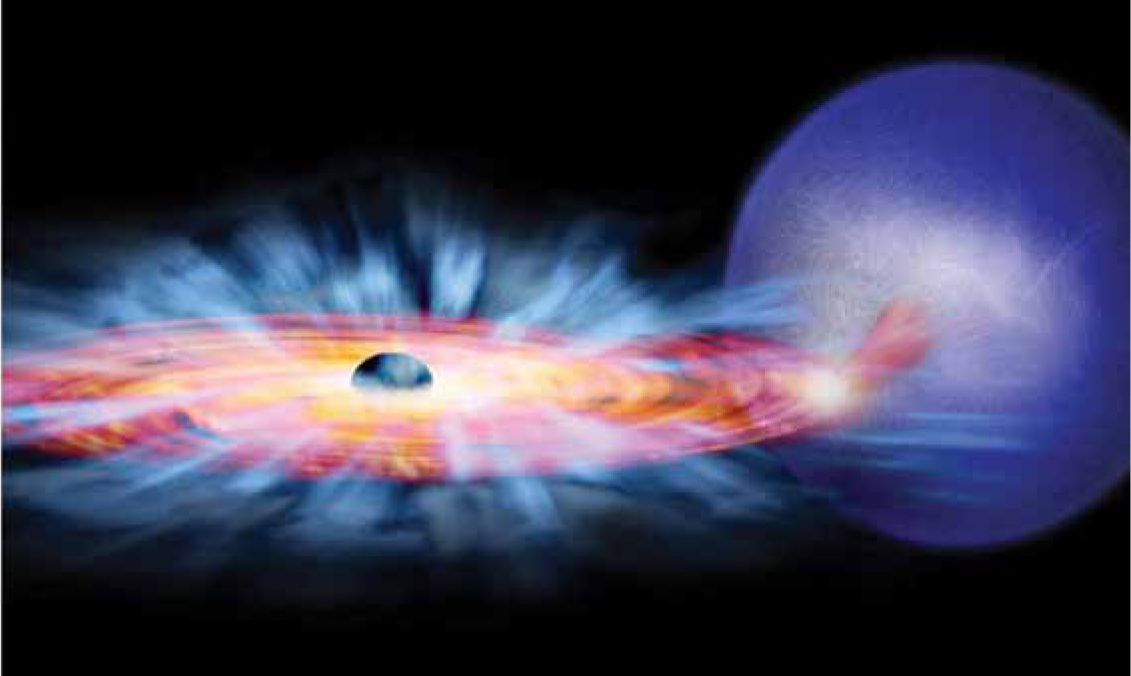CHAPTER
21

Black Holes
LEARNING GOALS
By reading the sections of this chapter, you will learn
| 21–1 | The main ideas of Einstein’s special theory of relativity |
| 21–2 | How Einstein’s general theory of relativity describes the nature of gravitation |
| 21–3 | The evidence for black holes in binary star systems |
| 21–4 | How the sudden formation of black holes can explain the mysterious gamma-ray bursts |
| 21–5 | How astronomers have detected supermassive black holes at the centers of galaxies |
| 21–6 | The simple structure of a nonrotating black hole |
| 21–7 | How just three numbers completely describe the properties of a black hole |
| 21–8 | What it might be like to approach a black hole |
| 21–9 | How black holes evaporate over time |
Imagine a swirling disk of gas and dust, orbiting around an object that has more mass than the Sun but the object is so dark that it cannot be seen. Imagine the material in this disk being compressed and heated as it spirals into the unseen object, reaching temperatures so high that the material emits X-rays. And imagine that the unseen object has such powerful gravity that any material that falls into it simply disappears, never to be seen again.
Such hellish maelstroms, like the one shown in the illustration, really do exist. The disks are called accretion disks, and the unseen objects with immensely strong gravity are called black holes.
The matter that makes up a black hole has been so greatly compressed that it violently warps space and time. If you get too close to a black hole, the speed you would need to escape exceeds the speed of light. Because nothing can travel faster than light, nothing—not even light—can escape from a black hole.
Black holes, whose existence was predicted by Einstein’s general theory of relativity (our best description of what gravity is and how it behaves), are both strange and simple. The structure of a black hole is completely specified by only three quantities—its mass, electric charge, and angular momentum. Perhaps strangest of all, there is compelling evidence that black holes really exist. In recent years, astronomers have found that certain binary star systems contain black holes. They have also found evidence that extremely massive stars form black holes at their centers, producing immense bursts of gamma rays in the process. Even more remarkable is the discovery that black holes of more than a million solar masses lie at the centers of many galaxies, including our own Milky Way.